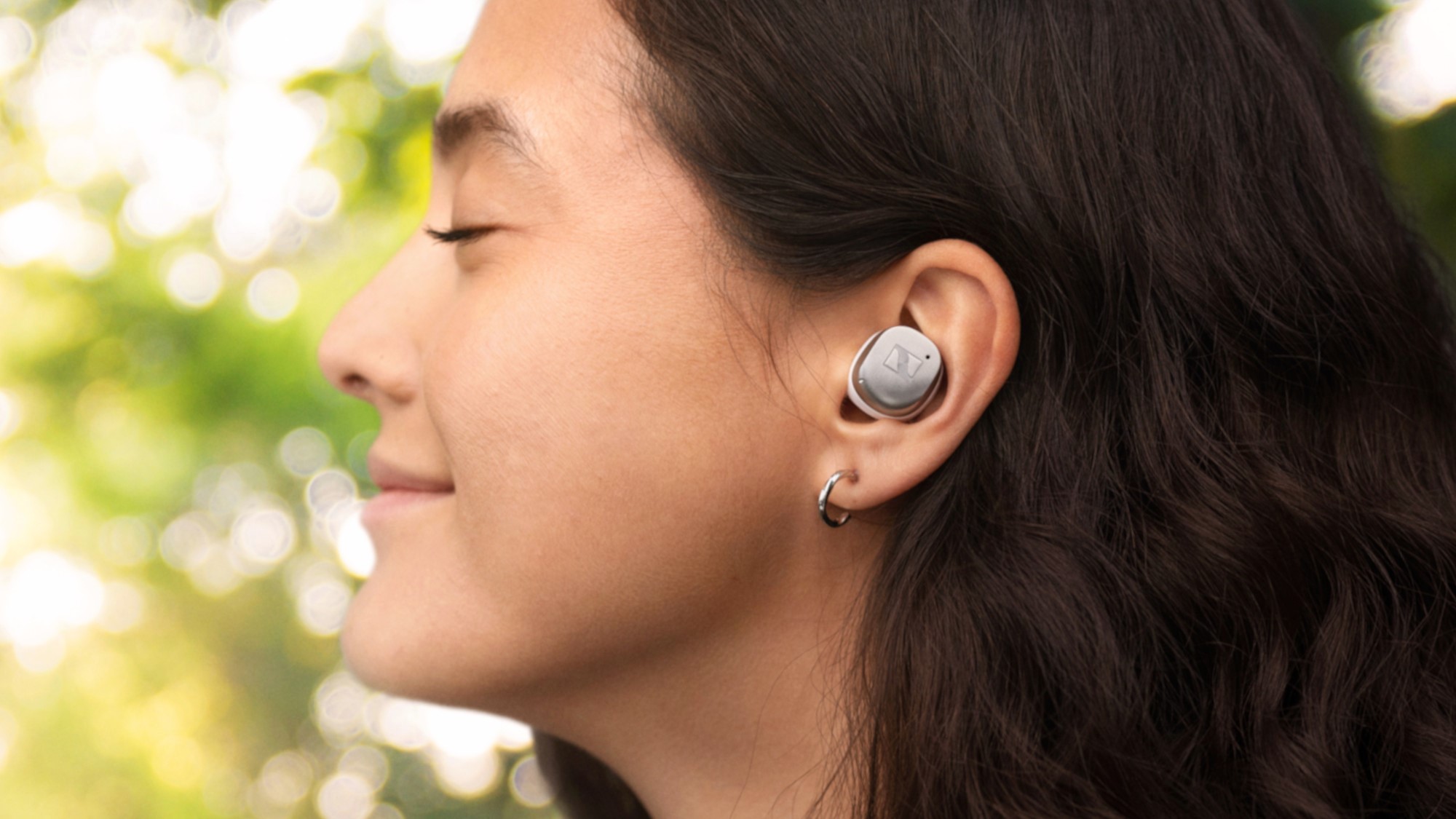I’ve worn smart glasses for over 4 years — here’s the best AR and AI glasses
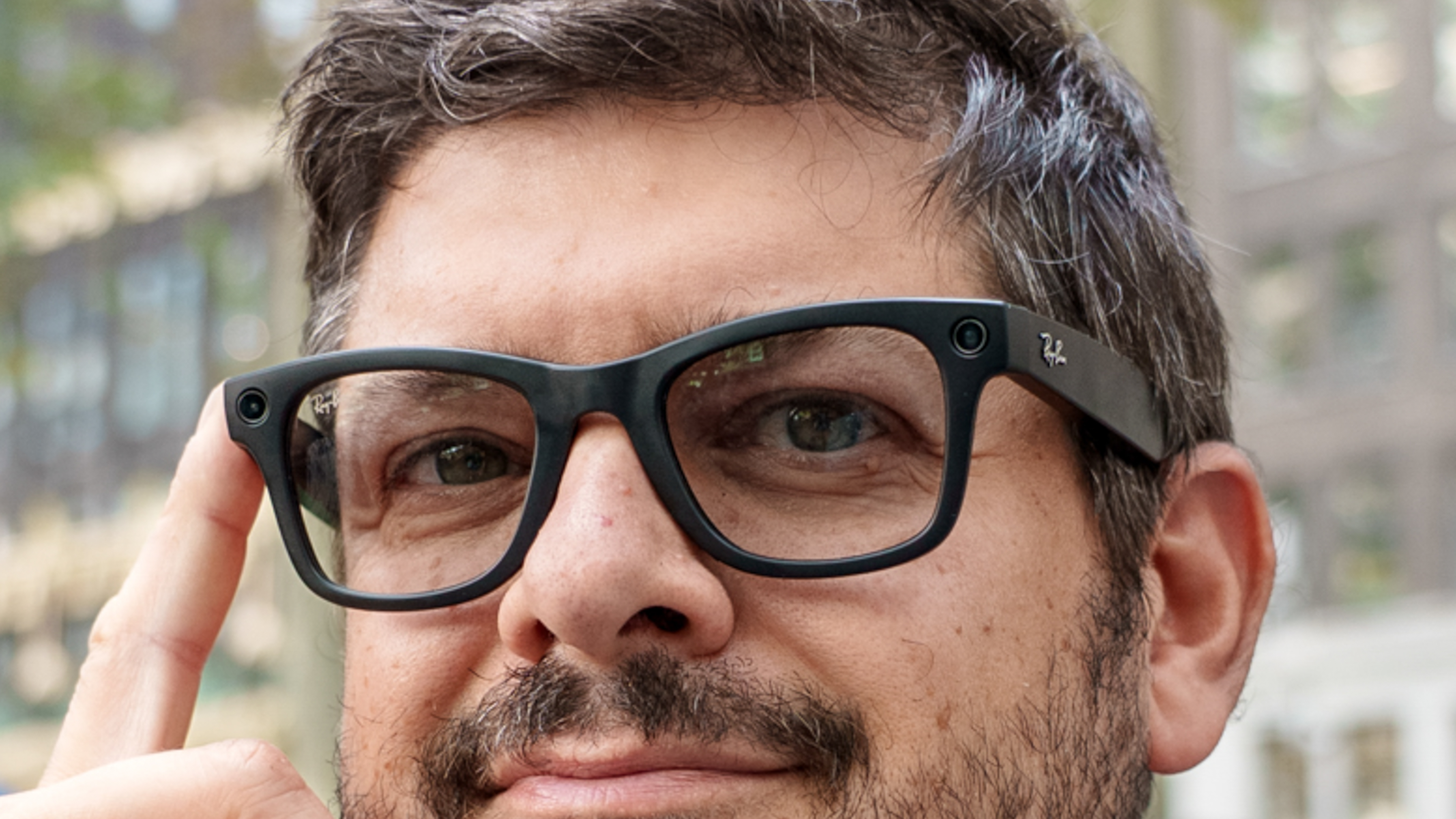
I’ve been wearing smart glasses for over four years — wearing them for over 100,000 miles of travel — and I’m testing every single new pair to help you find the perfect specs for your needs.
It’s a fascinating time of transition for this category. Right now, there are two types of smart glasses: AR and AI. AR glasses are basically an external display for the likes of your laptop, smartphone or gaming handheld. AI specs are more of a wearable window into LLMs like ChatGPT or Meta AI to help you get things done or answer questions about the world around you.
But more and more, these two technologies are coming together — shown by the likes of the Meta Ray-Ban Display glasses and Android XR. The best of AR and AI will come together into one device, but that is still a ways off. So to pick the best smart glasses for you, think about what you want from them.
For example: if you’re a frequent flyer and want to watch, work and play without the neck strain of looking down at a screen, your best options are either the Viture Luma Pro or the Xreal One Pro. These are priced in the mid- to high-range, though, and the RayNeo Air 3s makes for a great budget alternative.
But if your main mission is to capture the world around you, and have a closer connection to AI assistance, the Ray-Ban Meta (Gen 2) Smart Glasses are the best AI wearable you can buy.
The quick list

The Viture Luma Pro are one of the best overall pairs of AR smart glasses you can get — packing a phenomenal picture quality, a wider field of view and strong electrochromic film into a smaller pair of specs with a slick semi-transparent design.
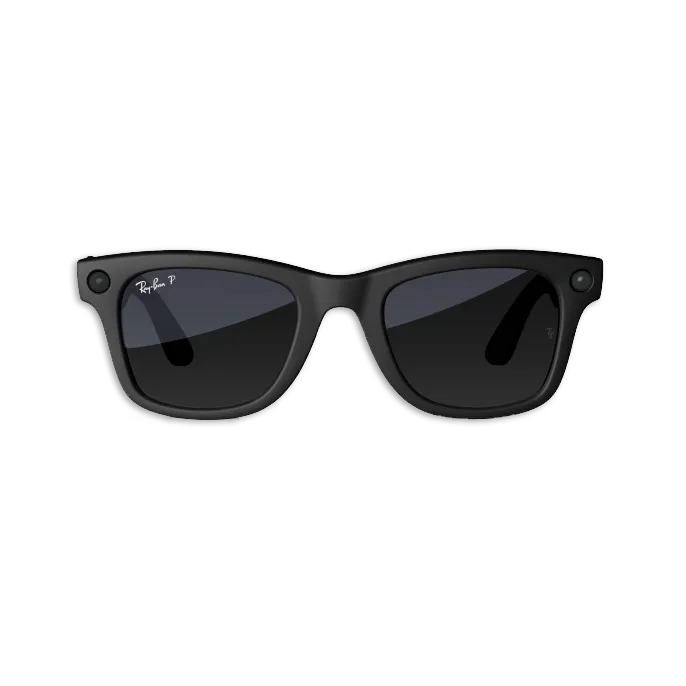
When it comes to AI smart glasses, the Ray-Ban Meta (Gen 2) specs are a clear champion in this area — packing an improved camera, better battery life and all the Meta AI smarts that are upgraded regularly.
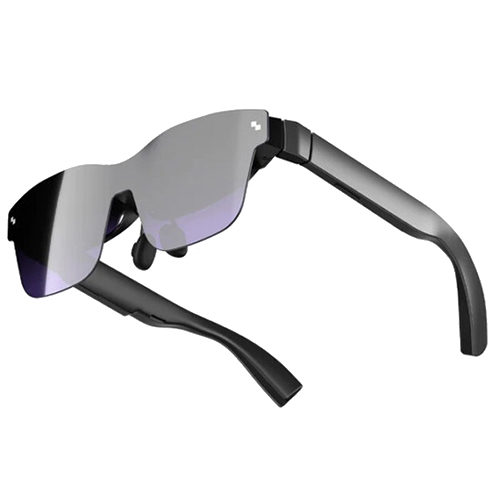
The RayNeo Air 3s ditch all the spatial computing stuff — focusing instead on offering an incredible picture quality and surprisingly strong sound output at a cheap price. For $269, they may not be the cheapest, but for pure price-to-performance, these are stunning value for money.

If the best of the best with no expense spared is your thing, the Xreal One Pros are the ones to buy. There’s no better panel in the business than the company’s new flatter prism tech and the on-board X1 chip enables for some swift on-board customization (no software required).
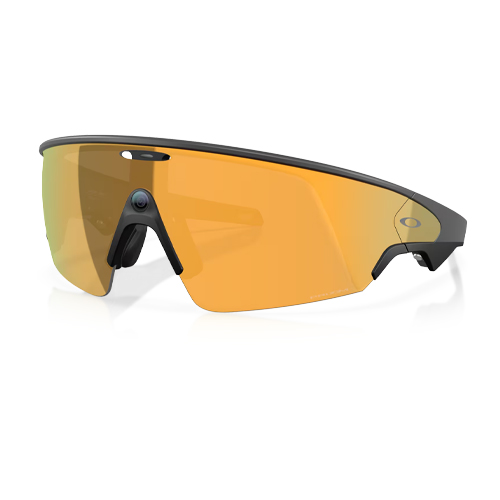
These are the whole deal for athletes and sports enthusiasts. The Oakley Meta Vanguard packs all the same Meta AI smarts into a more sports-oriented design with ultimate comfort and wraparound lenses — alongside Strava and Garmin integration.

For the movie buffs and serial binge watchers, there's no better AR glasses display tech out right now than the Rokid AR Lites! Plus you get some spatial computing goodness to boot.
Ones to watch over the next 12 months
Why you can trust Tom's Guide
2025 has been a wild year for smart glasses, but we’re only just getting started! So with that in mind, it’s worth me pointing out specs coming in the final couple months of this year, and how 2026 may be the moment AR and AI truly come together.
- Viture announced a whole load of AR glasses a few months ago, and we're looking forward to seeing The Beast launch real soon.
- Looking to next year, Xreal’s Android XR-armed Project Aura will be coming to market. Similar to Meta’s Orion, this will be a pair of specs packing a 70-degree field of view (I tested a prototype of this FOV from Viture and it’s mind blowing), which is connected to a computing puck.
- Also coming next year will be Snap Specs. You’ve seen the development of these over the years, and we’re blown away with the on-device computing without a puck — especially after I caught a glimpse of the consumer-centric software they will use. We also talked to Snap’s VP of Hardware, Scott Myers, about these.
The smart glasses competition is really starting to heat up. So it's time to put my years of experience into practice and round-up the best AI and AR glasses you can buy right now.
The best smart glasses you can buy today
The best AR glasses
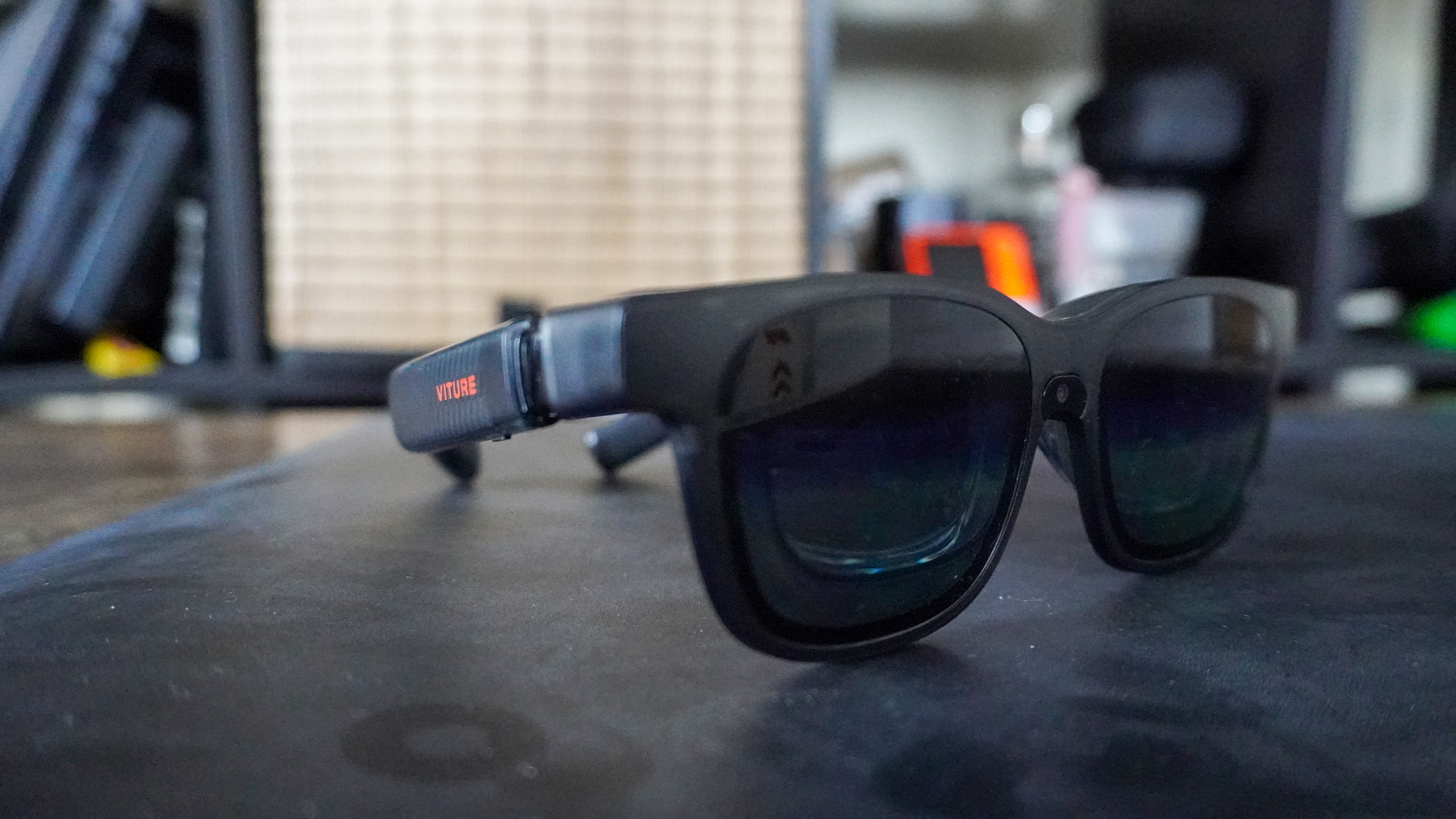
Specifications

After testing the Viture Luma Pro for a month, they are now my daily driver for commutes and binge watching in bed for that mesmerizing display quality. These glasses check all the boxes — they’re comfortable, the picture quality is stunning, and they connect to just about anything. Sure, the “4K-like clarity” tagline sounded like marketing fluff at first, but once I saw the razor-sharp detail, even at the edges with no fringing, it clicked. At $499, they’re easily the best AR glasses I’ve used.
Read the full Viture Luma Pro review
Who are these for?
Plenty of people could benefit from the Viture Luma Pro, but frequent travelers top the list — for them, these are a game-changer. Beyond travel, I’ve found them incredibly useful for gaming (especially when the TV’s taken), handling sensitive work that I’d rather not display publicly, and anytime I want a multi-monitor setup without being tied to my desk.
Why are these the best AR smart glasses?
Put simply, the important upgrades here over the Viture Pros — from display quality to design — all make these a phenomenal pair of specs to wear with impressive value for money at the core with a mid-range $499 price tag. The color tuning on the display makes everything a flash flood of accurate color.
What do we like?
👍 The best display at this price: To really appreciate the Viture Luma Pro, you’ve got to understand the tech behind the magic. It uses Sony’s micro-OLED display, which is power efficient and sharper than its 1200p resolution suggests. Thanks to telescope-inspired optics, improved high-frequency detail, and camera-grade anti-reflective coatings, the image is razor-sharp with minimal glare. The result? A stunning 152-inch virtual display with vivid color. One caveat: myopia adjustment is now more limited to preserve peripheral image quality.
👍 Improved design: The faux-Wayfarer design of the Luma Pro is subtle to the point you won’t get double-takes on public transport. Sure, they’re still chunky behind the lenses, but small refinements in shape and size make them feel less noticeable in public. Versatility is built in — from magnetically attached nose pads (which sit higher than usual) to adjustable arms for a better fit. Add in the soft-touch plastic for all-day comfort and tasteful lighting effects, and these feel both practical and surprisingly stylish.
What don’t we like?
👎 Sound is on the quiet side: In fairness to Viture, the surround sound quality is definitely there in giving you a sneaky bit of 5.1 action. But the volume is very quickly overwhelmed by any atmospheric noise around you.
👎 Not quite finished yet: Xreal handles most of its display magic on-device, thanks to the X1 chip — letting you simulate a 32:9 ultrawide screen, adjust display size, and tweak settings right on the glasses. Viture, on the other hand, leans on software, which takes longer to set up but gives you more flexibility, like vertical triple displays or converting 2D to 3D. Not everything’s live yet — features like 6 DoF tracking via the built-in camera are coming post-launch, so I’ll revisit them.
Bottom line
Let’s be real — yes, these are the best AR glasses you can buy… by a nose. Xreal’s still got the edge in ease-of-use and features (that 6 DoF update can’t come soon enough), but the Viture Luma Pro’s stunning display and $150 price gap make it a very pretty underdog.
The best AI glasses

Specifications

Absent of any real competition in the AI smart glasses space, the Ray-Ban Meta (gen 2) continues to reign supreme by improving the fundamentals with a modest upgrade. There's a better camera and longer battery life while keeping those same stylish looks that help them blend into any social situation.
Read the full Ray-Ban Meta (Gen 2) Smart Glasses review
Who are these for?
These are for those who do want to get into the world of smart glasses without compromising on the aesthetics of wearing specs. There's a whole lot of goofy-looking smart glasses out there, but the various styles of the Ray-Ban Meta (gen 2) look seriously slick — ready to blend in while giving you a portal to Meta AI.
Why are these the best AI smart glasses?
The iterative upgrades here manage to improve some of our key gripes about the original Ray-Ban Meta smart glasses. First, the improved camera, with better low light performance and higher resolution video quality, helps these work across more scenarios than just daytime (make sure you get transition lenses for that). And second, the longer battery life ensures a whole day of casual use.
What do we like?
👍 Gorgeous design: With smart glasses, you want them to fade into the background as a stylish frame on your face. That’s exactly what the Ray-Ban Metas do — with more design options than gen 1, the dimensions and aesthetic barely look any different to your standard pair of Ray-Bans. Plus, the attention paid to keeping that weight to no more than 50 grams makes them immediately wearable all-day round.
👍 Upgraded cameras: On a spec sheet, these sound similar for the first-gen specs — a 12MP camera. However, updates have been made to the video capturing capability (able to grab shots at 3K Ultra HD), and low light performance has seen an upgrade too.
👍 Speakers and Mics are still a revelation: The first thing you notice whenever calling someone on the glasses is the voice clarity. Those speakers are impressive with minimal audio spillage — packing surprising bass when playing music. On top of that, those on the other end of your calls will appreciate how clear and detailed your voice is through the mics.
👍 Meta AI is finding its stride: Meta AI is really coming into its own as part of the Ray-Ban Meta (Gen 2) glasses, as live translation abilities have been improved, vision AI is on a whole new level, and conversational aspects of talking to your glasses do add a new level of helpfulness.
What don’t we like?
👎 Meta AI chats will be used for ad targeting: It's Meta after all — most of the time, you are the customer. Meta has announced that it will start using AI chats to start targeting ads in the U.S. People in the U.K. and E.U. will not be getting this, but just a fair warning that Meta's listening to send you ads.
👎 Pricey: At $379, these are indeed an expensive investment. But that’s just for the base model that gives you sunglasses lenses (limiting use to just 50% of the time because you don’t want to be that weirdo that wears shades indoors). Transition lenses will up that price to $459.
Bottom line
The second-gen Ray-Ban Meta smart glasses offer an even more polished experience. They are easily the best AI glasses you can buy right now, and a stellar companion for capturing life’s moments, listening to music while not restricting your environmental awareness and taking calls.
The best cheap AR glasses
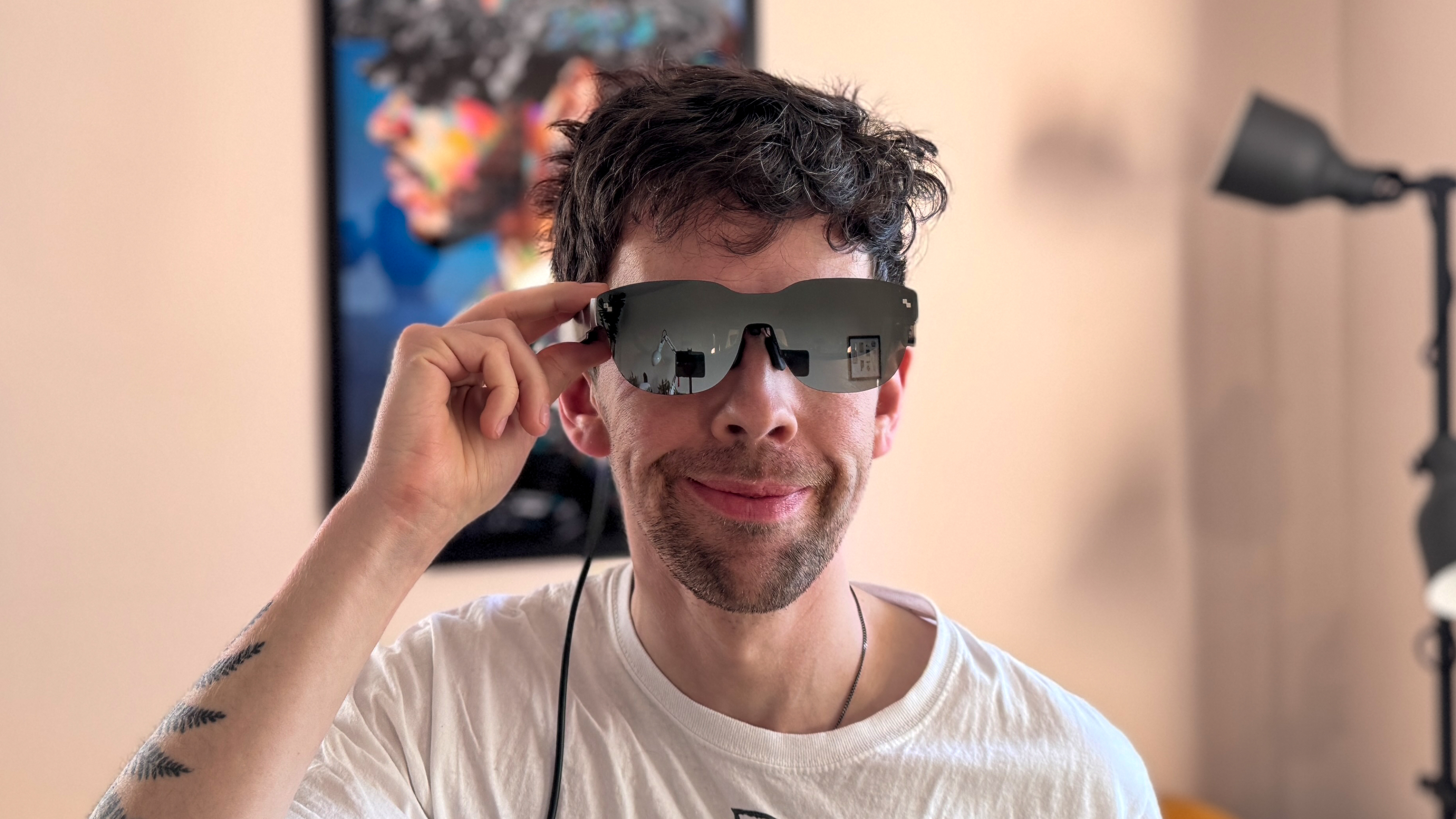
Specifications

AR glasses can get expensive, but RayNeo Air 3s keeps things cheap by focusing solely on a gorgeous picture and crystal clear sound — priced at $269. It ditches the spatial computing smarts to just give you a prime entertainment experience on your face. And while the lack of ways to block out the light can be a pain, there's nothing better at this cost.
Read the full RayNeo Air 3s review
Who are these for?
These are for those who want to dip their toes into AR glasses, with the sole purpose of saving themselves neck strain of looking down at screens on long journeys.
Why are these the best cheap AR smart glasses?
The compromises RayNeo makes to get that Air 3s price down are in all the right places. Spatial computing on AR glasses is still a work in progress, so going back to the basics of a top notch picture quality and loud speakers is a masterstroke in value for money.
What do we like?
👍 Vivid, bright and smooth: Those HuwView micro-OLED displays were a joy to behold in front of my eyes during long haul flights — providing a sharp 1080p picture with a buttery smooth 120Hz refresh rate and vivid color.
👍 Good for work too: Usually, AR glasses lean in more towards over-saturating the OLED display tuning. The accuracy of the 98% DCI-P3 color gamut here gave me confidence in being able to do creative work in apps like Photoshop.
👍 Value for money: At just $269, this is a very comfortable pair of glasses with wearability for hours and a focus on the audio/visual experience that pays off massively for anybody focused solely on these.
What don’t we like?
👎 No lens shade: Given these are sub-$300, I didn't expect them to come with electrochromic lenses — the glass that can automatically darken at the press of a button to get more immersed in your content. But to not even get a plastic lens shade to blindfold yourself on long journeys is frustrating.
Bottom line
During my 5,000 miles flying with these, it became clear that the RayNeo Air 3s are easily the best value for money AR glasses you can get. If you don't care for 3DoF tracking or spatial computing, and just want a great external display on-the-go, these are the ones to buy.
The best premium AR glasses

Specifications

The Xreal One Pros are a special breed — an uber premium pair of AR glasses with the price tag to match. They may be expensive at $649 for the glasses. But for that, you’re getting an incredible display via Xreal’s new flatter prisms, great comfort, and the best spatial computing support in the business thanks to that X1 chip driving a lot of the 3DoF and display smarts entirely on the glasses.
Read our full Xreal One Pro review
Who are these for?
This is for those already familiar with AR glasses — the enthusiasts who’ve tested the early models, know their way around the tech, and are ready for a serious upgrade. If you’re looking to experience the next generation of display quality, comfort, and versatility, this is where you take that leap.
Why are these the best premium AR glasses?
Put simply, these are true next generation specs. The Xreal One gave us a glance with the X1 chip handling all the display processing and 3DoF tracking entirely on device without any additional software needed. But the Pros really bring the heat with that supreme display with a wider field of view.
What do we like?
👍 X1 chip is a mini breakthrough: When it comes to the pros of buying Xreal One, none quite stack up to what the X1 chip brings to the table. Essentially, instead of having to rely on external software (such as Xreal's Nebula app) to control/customize the picture coming to the glasses and enable 3DoF tracking, you can do all that on-device now.
👍 The next generation of display tech is here: Xreal’s new flat prism design shrinks the hardware but expands the experience — I’m talking about a simulated 171-inch display with a wide 57-degree field of view. It’s smooth at 120Hz, color-accurate, and free of edge blur or flicker. Thanks to the X1 chip and 3 DoF tracking, I snapped a 32:9 ultrawide screen onto a plane seatback and got to work — or game — in full immersion. Even mid-flight, the display stayed rock solid. It’s seriously next-gen stuff.
👍 Sharp looks: The only real difference in design between these and the Xreal One is that the Pros are a touch heavier. That means you’re getting the same sleek glasses that don’t draw confused looks on long-haul flights. Plus, that electrochromic film is impeccable at blocking everything out so you can focus on your movie.
What don’t we like?
👎 $649 is a lot for most: You better be committed because this is a big price tag for AR glasses. Add on top of that the $99 for the Xreal Eye that will bring 6DoF tracking in the future and this becomes a very pricey investment indeed.
👎 Eye spy a dull camera: You might’ve spotted that little rubber section on the nose of the Xreal One — it pops out to fit the Xreal Eye Camera, a 12MP first-person shooter of sorts. It’s fun but limited: solid color balance, poor low-light, no onboard storage. You have to transfer everything mid-session, or it’s gone. Clearly, it’s meant for future 6 DoF tracking, but since that’s not live yet, I’d hold off buying this add-on until it actually does something game-changing.
Bottom line
Quality-wise, these are some of the best AR glasses you can buy, but to buy them, you’ve got to pay a big price. This is a serious glow-up in display tech, with the trusty X1 chip, rich Bose audio, and a comfy, premium build. But at $649, it’s basically a luxe monitor strapped to your face. It’s future-ready, sure — think Project Aura preview — but right now, it’s pixel peepers only.
The best smart glasses for sports

Specifications

Taking the formula of the Ray-Ban Meta smart glasses and injecting some athlete-level integrations such as Garmin and Strava alongside ultimate comfort makes these a phenomenal pair of specs for sports. Throw in the great camera that can capture motion stabilized video and you'll be showing off all your big moments.
Read our full Oakley Meta Vanguard review.
Who are these for?
As the brand name suggests, these are for athletes and sports enthusiasts who need outdoor eye protection for their activities and the smart tech that comes with it.
Why are these the best smart glasses for sports?
Alongside all that we love about the Ray-Ban Meta (gen 2) being included in here, three key things make these great for sports enthusiasts — the wrap around lenses for eye protection, the centrally mounted camera with motion stabilization, and integration with Garmin and Strava.
What do we like?
👍 Great sports-oriented design: The Vanguards may be a little cringe to wear in normal social situations. But on the field or in any sporting situation, they do a great job at attenuating glare from all angles with the wrap-around lenses, while balancing weight effectively for comfortable all-day wear.
👍 Great camera: That 12MP camera is mounted in the center with a 122-degree field of view, so you don't have any of the framing concerns that come with the Ray-Ban Metas. On top of that, it has motion stabilization, so if you're capturing a sick trick on the slopes, you can get it at up to 3K with no distracting jitters.
👍 Thoughtful sporting integrations: Beyond all the usual Meta AI asks you can make of this device, you can also ask for updates on key fitness metrics from Garmin or Strava. In fact, you can overlay stats on your video too.
What don’t we like?
👎 Huge case: If portability is the name of the game, leave the case at home when you play in these. It's a bulky container to say the least!
👎 Limited water resistance: With an IP67 rating against water, they're protected against sweat and the occasional splash or two. That means the durability may be brought into question when it comes to the pouring rain or more serious watersports.
Bottom line
If you need something to capture those epic sports moments while also providing the eyecare you need at times like this, then the Oakley Meta Vanguards are worth that $499 price tag.
The best AR glasses for picture and sound
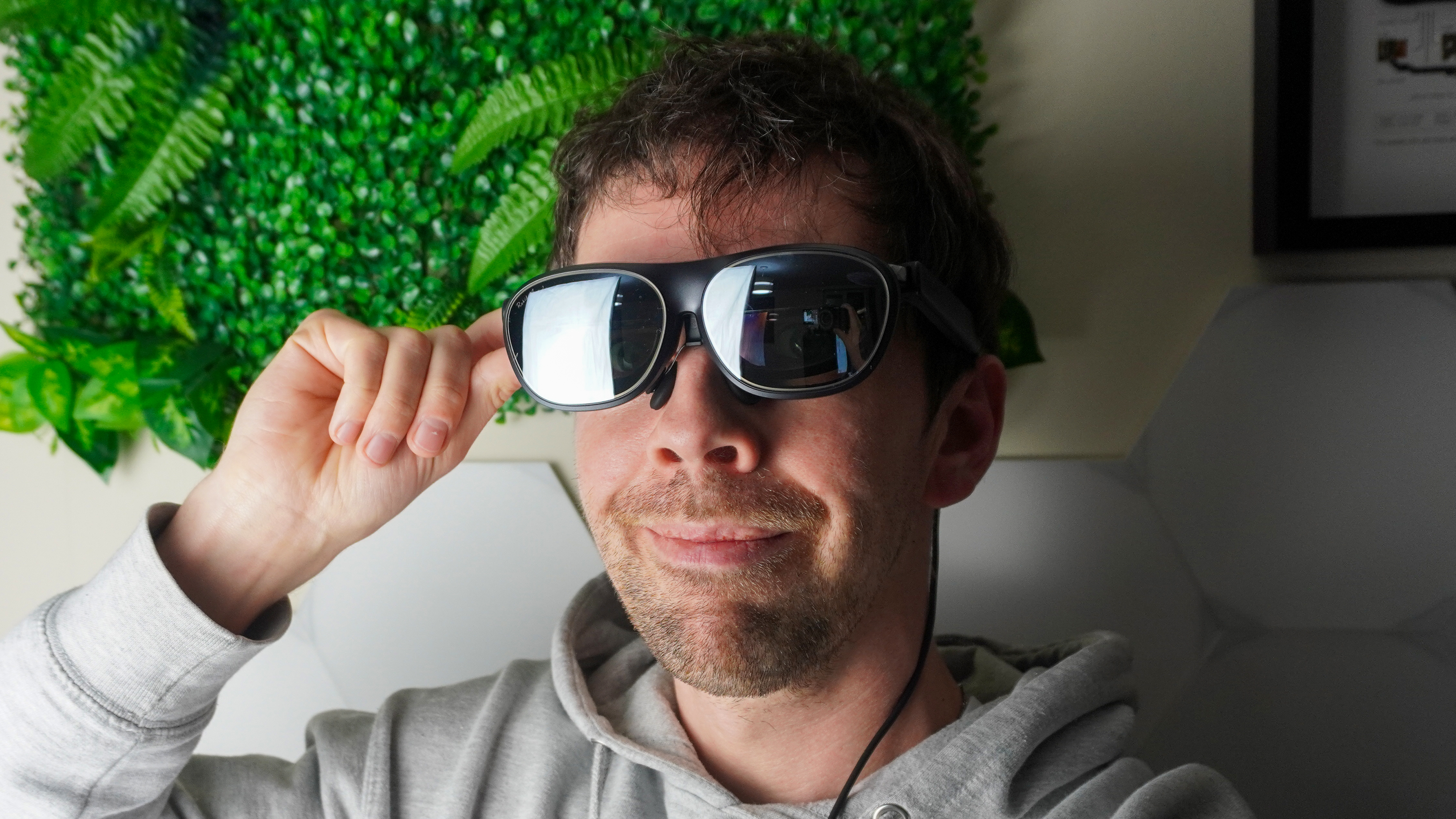
Specifications

The Rokid AR Lite are just a successful Kickstarter project at the moment. But in testing these ahead of their CES 2025 unveiling, I can safely say these offer the best picture and sound in AR glasses. That 1200p picture per-eye is perfectly tuned for expressive color and deep contrast, and those speakers are surprisingly loud and crispy with detail. Pair that with Station 2 for useful spatial computing, and that high $749 price tag starts to make a little sense.
Who are these for?
The Rokid AR Lite package is for those prime pixel peepers who want to get the most out of that Micro-OLED tech. With a virtual screen size of 300 inches, this is the largest simulated cinema screen of the whole pack on this list. Plus, Station 2 gives you access to downloading a bunch of content for offline watching.
Why are these the best AR glasses for picture and sound quality?
Simulating a 300-inch TV in front of you, the picture quality is stunning here — big, bright and super sharp. On top of that, I'm not sure what kind of wizardry Rokid is up to, but the speakers are both loud and clear with a surprisingly minimal amount of tinniness given their size.
What do we like?
👍 Mind-blowing display: Micro-OLED has not reached the peak I thought it had. Rokid has upped the game with super crispy, gorgeous panels sporting a 1200p resolution per eye, a 120Hz refresh rate and a super wide 50-degree viewing angle.
👍 Surprisingly good sound quality: It's become a given that speakers in AR glasses may have good detail, but they will always be tinny. That was until I heard the crispy speakers in the Rokid specs — sublime surround elements with some surprising depth.
👍 Good spatial computing experience: The Station 2 accessory that comes in this package unlocks a fully-fleshed spatial computing experience with its little touchpad/accelerometer-armed frame. Slick in use for gameplay and productivity.
What don’t we like?
👎 This is pricey: While the price isn't confirmed outside of the Kickstarter page, list pricing indicates that the glasses and Station 2 combo will come in at a beefy $749. That's a steep asking price when you could get the Xreal Air 2 and Beam Pro for up to $250 less.
👎 No Electrochromic film: The beauty of AR glasses is that translucent viewing — getting all the goodness of that screen but still faintly seeing what's in front of you thanks to an adjustable Electrochromic film. Frustratingly, these don't have that and you're left relying on the snap-on lens shade.
Bottom line
If you want the best display and audio in a pair of AR glasses, the Rokids are the specs to buy. With their gorgeous picture quality (with myopia adjustment dials) and an impressive spatial computing element for watching all your content, this is the one for the binge watchers. Just watch out for that price tag and the lack of electrochromic film!
Get instant access to breaking news, the hottest reviews, great deals and helpful tips.

Jason brings a decade of tech and gaming journalism experience to his role as a Managing Editor of Computing at Tom's Guide. He has previously written for Laptop Mag, Tom's Hardware, Kotaku, Stuff and BBC Science Focus. In his spare time, you'll find Jason looking for good dogs to pet or thinking about eating pizza if he isn't already.
